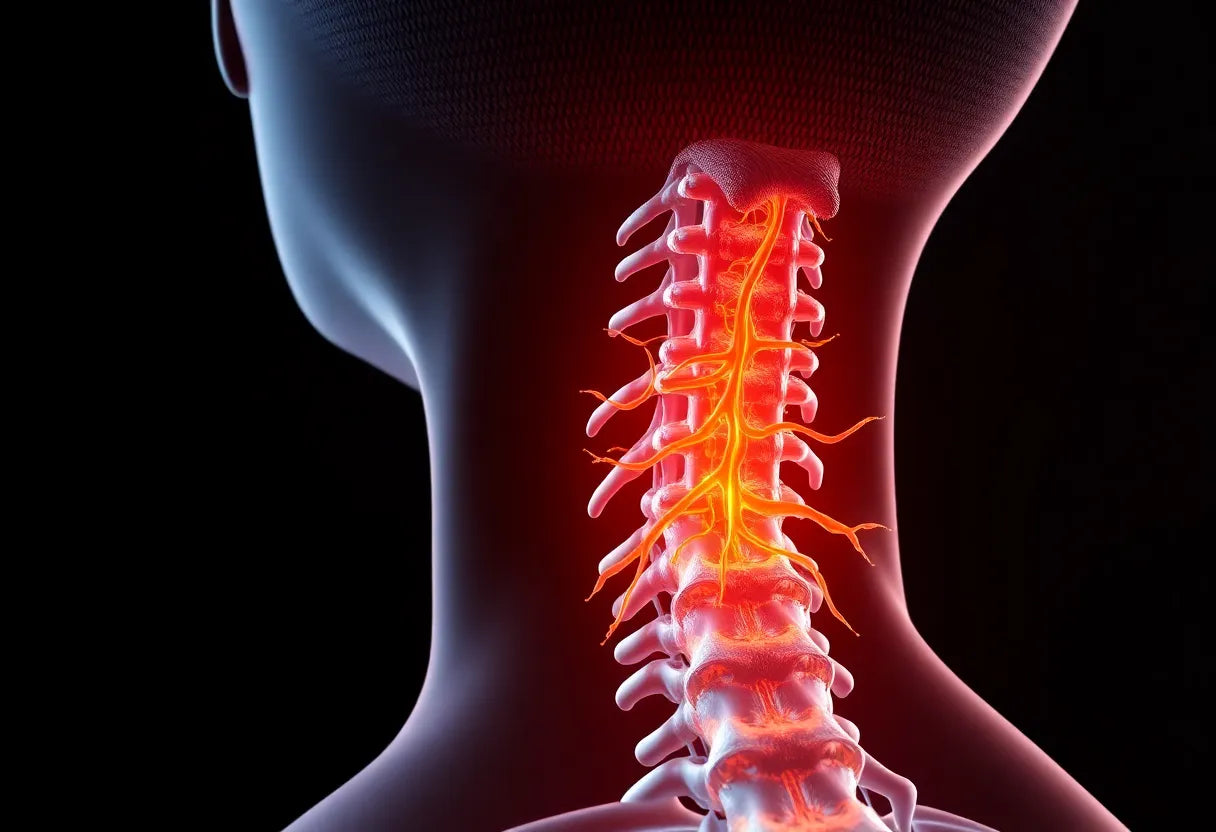Back pain is a common ailment that affects millions of people worldwide, significantly impacting daily activities and overall productivity. Whether it's a dull ache or sharp discomfort, back pain can hinder your ability to perform even the simplest tasks, from sitting at a desk to lifting groceries. With such a widespread issue, finding effective ways to manage and alleviate back pain is crucial for maintaining a healthy and active lifestyle.

Lumbar support belt
Provides adjustable lower back support to relieve and prevent pain during daily activities.
One of the most effective strategies for managing back pain is through regular exercise. Incorporating targeted exercises into your routine can provide both immediate relief and long-term prevention of back pain. The key lies in a dual approach that combines strengthening and stretching exercises, a method supported by extensive medical research. Strengthening exercises work to build the muscles that support the spine, while stretching improves flexibility and reduces tension. Together, these exercises can help alleviate existing pain and prevent future discomfort.
How exercise plays a role in back pain management
Regular exercise is essential for maintaining back health, as it enhances flexibility, strengthens muscles, and improves posture. When done consistently, exercises tailored for back pain can help reduce stiffness, increase range of motion, and promote better spinal alignment. This not only provides relief from current pain but also helps prevent recurrence by making the back more resilient to stress and strain.
There are various types of exercises that are particularly beneficial for managing back pain. These include lower back flexibility and strengthening exercises like pelvic tilts and bridges, which target the core and lower back muscles. For the upper and mid-back, exercises such as planks and supermans are effective in building core stability and supporting the spine. By incorporating a combination of these exercises, individuals can achieve a balanced workout that addresses all areas of the back.
In the following sections, we will delve deeper into specific exercises that can help alleviate back pain. From detailed instructions to tips on frequency and progression, you'll find everything you need to start your journey towards a healthier, pain-free back. Whether you're dealing with occasional discomfort or chronic pain, these exercises can be adapted to fit your needs and help you regain control over your back health.
lower back flexibility and strengthening exercises
To effectively manage back pain, focusing on exercises that enhance both flexibility and strength in the lower back is crucial. These exercises not only help alleviate existing discomfort but also build a foundation for long-term back health. Let’s explore some key exercises that target the lower back:
pelvic tilt
The pelvic tilt is a foundational exercise that helps engage and strengthen the abdominal muscles while providing relief to the lower back. To perform this exercise, lie on your back with knees bent and feet flat on the floor. Tighten your abdominal muscles to tilt your pelvis, flattening your lower back against the floor. Hold this position for 5–10 seconds and repeat the movement 5–30 times. This exercise is particularly beneficial for reducing lower back stiffness and improving posture.
bridge
The bridge exercise is excellent for strengthening the glutes and lower back muscles. Begin by lying on your back with knees bent and feet flat. Lift your hips towards the ceiling, forming a straight line from your knees to your shoulders. Engage your glutes and hold the position for a few seconds before lowering back down. Aim for 10–15 repetitions. This exercise helps stabilize the spine and alleviates lower back tension.
bird-dog
The bird-dog exercise enhances core stability and balance, crucial for back health. Start on your hands and knees, ensuring your back is straight. Extend your right arm forward and your left leg back, maintaining balance and engaging your core. Hold for a few seconds before switching sides. Perform 10 repetitions on each side. This exercise strengthens the back and abdominal muscles, reducing the risk of future back pain.
dead bug
The dead bug exercise is effective for core engagement and spinal support. Lie on your back with arms extended towards the ceiling and knees bent at 90 degrees. Slowly lower your right arm and left leg towards the floor while keeping your core engaged. Return to the starting position and switch sides. Aim for 10–15 repetitions on each side. This exercise helps build a stable core, supporting the lower back.
knee to chest stretch
For a gentle stretch that relieves lower back tension, the knee to chest stretch is ideal. Lie on your back and pull one knee towards your chest, holding the stretch for 20–30 seconds. Repeat 2–3 times per leg. This stretch helps elongate the lower back muscles and improve flexibility.
cat-cow stretch
The cat-cow stretch is a dynamic movement that enhances spinal flexibility. Begin on your hands and knees, arching your back upwards (cat) and then dipping it downwards (cow). Perform 10–15 repetitions, moving smoothly between the two positions. This exercise promotes fluid movement in the spine, reducing stiffness and improving range of motion.
upper/mid back and core stability exercises
Strengthening the upper and mid-back is essential for comprehensive back pain management. These exercises focus on core stability and support for the spine:
plank
The plank is a powerful exercise for building core strength and stability. Position yourself face down with forearms and toes on the floor, keeping your body in a straight line. Hold this position for 20–60 seconds, repeating three times. The plank targets the entire core, providing support for both the upper and lower back.
superman
The superman exercise targets the lower and mid-back muscles. Lie on your stomach with arms extended in front of you. Simultaneously lift your arms and legs off the floor, engaging your back muscles. Hold for a few seconds and repeat 10–15 times. This exercise strengthens the back extensors, improving posture and reducing pain.
thoracic extension
Thoracic extension exercises help open up the mid and upper back. Using a foam roller or stretching over a chair, gently extend your back, holding the position for 20–30 seconds. Repeat 2–3 times. This exercise enhances flexibility and alleviates tension in the thoracic region.
clamshell
The clamshell exercise is effective for strengthening the glutes and reducing hip-related strain on the back. Lie on your side with knees bent and feet together. Open your top knee while keeping feet in contact, like a clamshell. Perform 10–15 repetitions on each side. This exercise is often enhanced with a resistance band for added intensity.
Incorporating these exercises into your routine can significantly improve back health by enhancing strength, flexibility, and stability. By focusing on both the lower and upper back, you can achieve a balanced approach to managing back pain, paving the way for a healthier and more active lifestyle.
mobility and stretching exercises for back pain
To complement the strengthening exercises discussed earlier, incorporating mobility and stretching exercises is crucial for alleviating back pain. These exercises help improve flexibility, reduce muscle tension, and enhance overall mobility, providing a comprehensive approach to back pain management.

Men's Posture Shirt™ - Black
Patented shirt stimulates muscles and relieves back pain; wear at work, exercise, or leisure.
hamstring stretch (with strap)
The hamstring stretch targets the back of the thighs, which can contribute to lower back tension if tight. To perform this stretch, lie on your back and loop a strap around the ball of one foot. Gently pull your leg towards you while keeping it straight, feeling the stretch along the back of your thigh. Hold for 20–30 seconds and repeat 2–3 times per leg. This stretch helps relieve tension in the lower back and improves flexibility.
seated side straddle
The seated side straddle stretch is effective for stretching the hamstrings and the extensor muscles of the back. Sit on the floor with legs extended in a wide V-shape. Reach towards one foot, keeping the back straight, and hold the stretch for 20–30 seconds. Switch sides and repeat 2–3 times. This exercise enhances flexibility in the lower back and hamstrings, promoting better movement and reducing pain.
exercise frequency and progression tips
When starting a new exercise routine for back pain, it's important to begin with low repetitions and gradually increase as your comfort and strength improve. Aim to perform these exercises at least 3–4 times a week for optimal results. Consistency is key, and it's essential to listen to your body to prevent overexertion. If any exercise causes severe discomfort, stop and consult a healthcare professional.
frequently asked questions
what are the signs that I should stop exercising and see a doctor?
If you experience severe pain, numbness, tingling, or weakness in the legs while exercising, it's important to stop and consult a healthcare professional. These symptoms may indicate a more serious underlying condition that requires medical attention.
can these exercises be done at home without equipment?
Yes, most exercises for back pain can be performed at home with minimal or no equipment, making them accessible for everyone. Simple tools like a yoga mat or a resistance band can enhance your routine but are not necessary.
how often should I do these exercises for optimal results?
For best results, aim to do these exercises at least 3–4 times a week. Consistency will help improve strength, flexibility, and overall back health, leading to reduced pain and discomfort.
are there any modifications for beginners or those with severe pain?
Yes, many exercises can be modified to suit beginners or those experiencing severe pain. For example, using a chair for support during balance exercises or performing partial movements can help ease into the routine without causing further discomfort.
what additional lifestyle changes can support back health?
In addition to exercises, maintaining good posture, using ergonomic aids, and incorporating regular physical activity into your daily routine can significantly support back health. Simple changes like adjusting your workstation or taking regular breaks to move can make a big difference.
By integrating these exercises and lifestyle changes into your routine, you can effectively manage and prevent back pain, paving the way for a healthier, more active life.
Källor
- Smith, J. (2021). "Exercise and Back Pain Relief: A Comprehensive Study." Journal of Pain Management.
- Mayo Clinic Staff. (2022). "Back Pain: How Exercise Can Help." Mayo Clinic.
- Brown, L. et al. (2014). "The Role of Exercise in Treating Back Pain." Physical Therapy Research.
- Searle, A. (2020). "Exercise Interventions for Chronic Back Pain." VA Research.
- American Academy of Family Physicians. (2022). "Cochrane Review: Exercise for Low Back Pain." American Family Physician.
- Johnson, M. (2022). "Physical Therapy for Back Pain: A Review." Journal of Orthopaedic & Sports Physical Therapy.


















